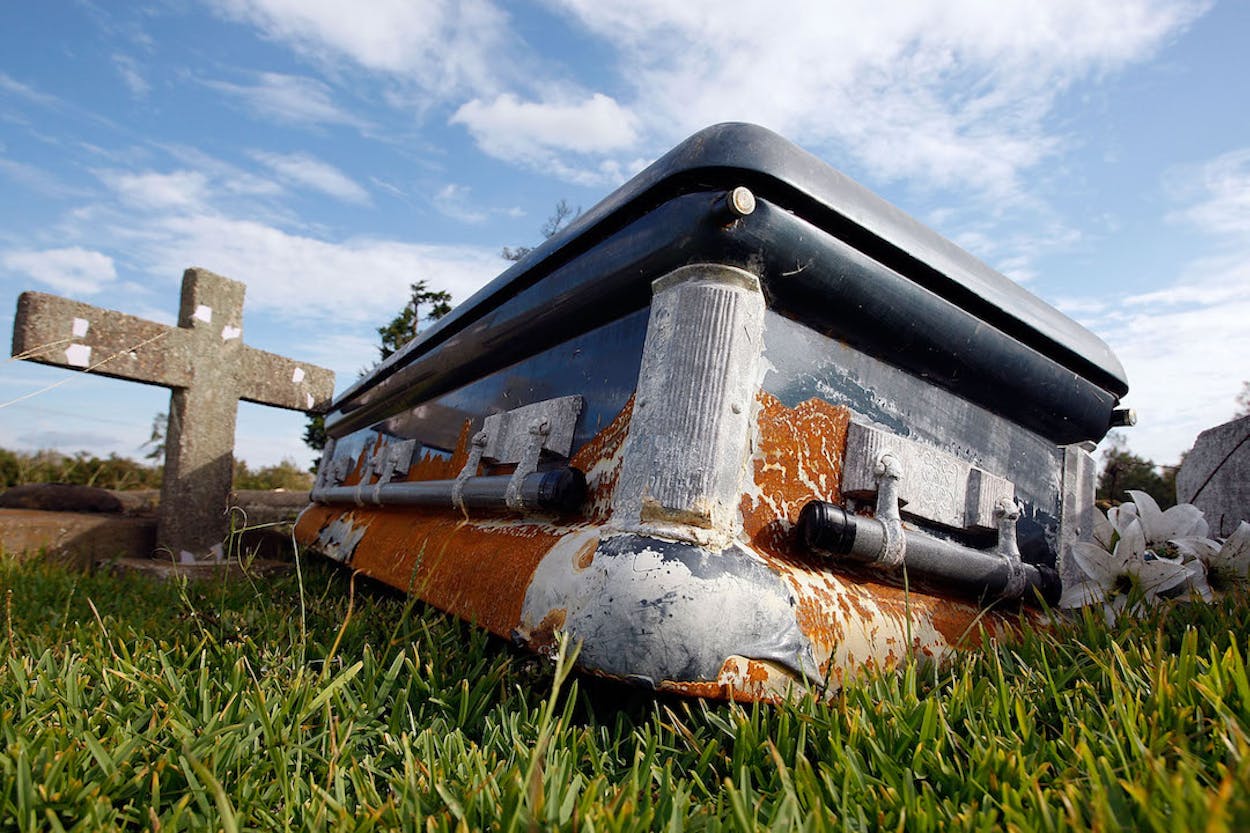Here’s a morbid factoid: if Northeast Texas was its own state, then it would come in and number 45 in the country for its mortality rate, far behind Texas’s ranking at number 31 overall. To further quantify Northeast Texas’s disproportionate dance with death, if the region’s expiration rate in 2014 was the same as the rest of the state, then 2,615 northeasterners would still be alive and kicking.
But they’re not.
Instead, we’re left with the statistical anomaly that is Northeast Texas’s astoundingly high mortality rate, far greater than the rest of Texas and even the rest of the country according to a new analysis by the University of Texas Health System, which used official state health data to paint a dreary picture of death and dying in Northeast Texas. The numbers are even more dismal when you break them down. The area has a 33 percent higher death rate from heart disease than the rest of the state, a 35 percent higher lung cancer mortality rate, and a 40 percent higher suicide rate. Northeast Texas’s mortality rate from strokes would land it last in the country if it were its own state.
Once you turn 25 in Northeast Texas, you should probably start to get your affairs in order, because 25 to 34-year olds have a 49 percent higher death rate in Northeast Texas than the rest of the state, while 35 to 44-year olds are 57 percent more likely to get a visit from the Grim Reaper. Of course, there’s no guarantee you’ll even make it that far. Despite Texas’s well-documented problems with infant mortality, the majority of the state is a neonatal wonderland compared to Northeast Texas, where 6.3 babies die every 1,000 births, compared to 5.8 across the Lone Star State.
So what’s going on? According to the study, the answer to at least part of Northeast Texas’s eternal rest riddle can be found in tobacco. The analysis discovered that 23.4 percent of Northeast Texas adults smoke cigarettes daily, a figure nearly ten percent greater than the rest of the state. That statistic provides a solid, if anecdotal, explanation for the region’s sky-high death rates related to ailments linked to tobacco use such as cancer and heart disease. Other important health factors, like obesity, access to healthcare, and physical fitness weren’t stellar in Northeast Texas, but the region’s rates in those categories were still similar to the rest of the state. As the author of the study, Dr. David Lakey, noted in a blog post he wrote for the Huffington Post when the analysis was released, Northeast Texas also is comparably poorer and less educated than Texas as a whole, which could be a factor. But Lakey wrote that he believes smoking is the “key causal factor.”
Lakey began focusing on improving the health of East Texans in 2015, when he left his Rick Perry-appointed post as commissioner of the Texas Department of State Health Services to serve as an associate vice chancellor for the University of Texas System and the senior vice president of the University of Texas Health Science Center at Tyler’s “population health initiative.” Despite this week’s grim report, Lakey wrote that Northeast Texans can rest assured that there are positive changes on the horizon, specifically with the January opening of a new school in Tyler focusing on training health professionals and providing much-needed services to rural communities across the region.
Editor’s note: The original post misstated the type of school opening in Tyler in January. We regret the error.






